
Disney and Universal are now known as bitter rivals in the theme park industry. But that hasn't always been the case - in fact, the two firms share more in common than you may realize.
For much of the past three decades - ever since Universal announced plans to build a theme park in Florida in the early 1980s - Disney and Universal have been rivals, competing at the very top of the theme park industry. This rivalry has many benefits for theme park fans, as we pointed out in a recent article.
However, the two companies actually have many things in common - and on more than one occasion they came very close to working together on theme park attractions. If things had panned out slightly differently, the two companies could actually have been the best of friends. And even with the competition between them, they are still closer in some ways than you might think.
Here are 10 strange facts about the Disney-Universal theme park rivalry that you may not be aware of.
10. Universal triggered the creation of Mickey Mouse
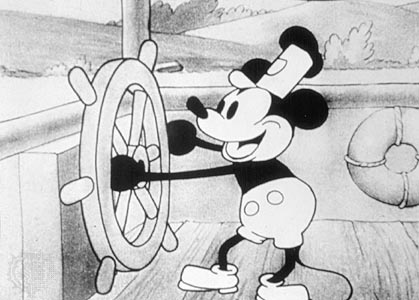
In the early days of his animation career, Walt Disney and Ub Iwerks created an animated character known as Oswald the Lucky Rabbit. The cartoons were commissioned by Universal Pictures, which had asked Disney's original distributor, Winkler Pictures (then controlled by Charles Mintz) to develop a series based around a rabbit.
With the contract due for renewal in February 1928, Walt travelled to New York to renegotiate with Mintz and Universal. To his dismay, he was not able to secure a more favorable deal. Even worse, Mintz instead hired away his best animators and continued to produce the cartoons himself. Eventually, Universal disposed of Mintz and starting producing the cartoons on its own lot instead, continuing to create them until 1943.
Unintentionally, Universal had triggered the creation of Disney's most enduring character. Furious about losing control of Oswald and determined not to repeat his mistakes, Walt and Iwerks created Mickey Mouse. The character went on to become far more popular than Oswald ever was, leading to the growth of an animation empire and becoming the icon of Disney's theme parks.
9. Disney and Universal considered building a theme park together
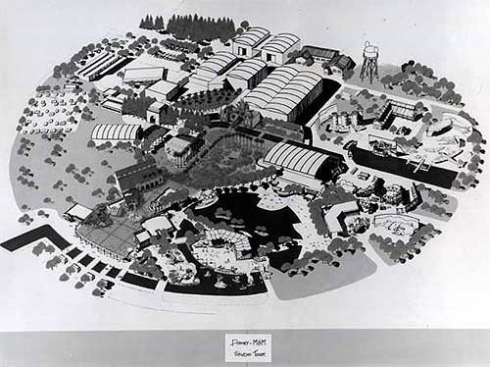
As Disney established itself in Florida with the opening of Walt Disney World in 1971, Universal's then-owner MCA was looking on enviously. Even before Disney's resort opened its gates, the chairman of the board of its Recreation Services Group, Jay Stein, had mooted the idea of opening a studio tour in Florida, to capitalize on the influx of tourists heading to Disney’s property. Plans for Universal Studios Florida were shown to a number of potential financial backers in the early 1980s.
Disney CEO Michael Eisner was not one to take competition lying down. He announced plans for Disney-MGM Studios, hoping to kill Universal's park before it even got off the ground. MCA's CEO, Sidney Sheinberg, was similarly competitive and vowed to press on with the project.
Despite MCA’s bullish plans for Universal Studios Florida, the company did entertain the possibility of a truce with Disney. In June 1987, the firm's CEOs discussed whether the two companies' attractions could be combined into a single studios park. MCA offered to drop its plans, in exchange for a half-share in Disney-MGM Studios. Disney, though, was only willing to pay MCA a small royalty to use material from its films. MCA walked away.
8. Mickey Mouse is friends with Universal characters
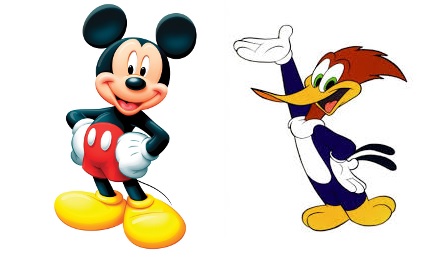
Four years of pitching to other companies in the entertainment sector had failed to turn up a viable partner for MCA, one able to share the huge financial burden of developing a studio and theme park in Orlando. The company had drained and fenced its land in Orlando, but plans to open the park in 1984 (announced in June 1982) were now a thing of the past.
Still, Sheinberg would not give up, focusing on drumming-up anti-Disney press coverage. At one point, he sent a horde of Universal-licensed characters, including Dracula and Woody Woodpecker, to the gates of the Magic Kingdom, where Disney refused them entry. Mickey and Minnie did become friendly with the Universal characters, though - Disney allowed them to pose together for photographs.
7. Disney considered buying Universal
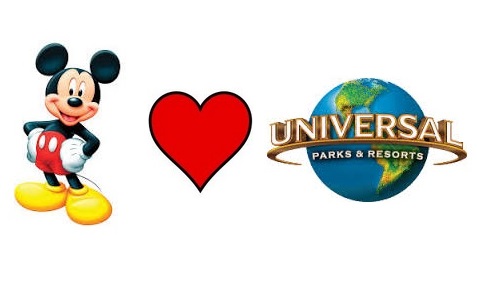
By 2002, Vivendi was looking to offload its half-stake in Universal Orlando (along with Universal's production operations). In those days, the resort was struggling to deal with catastrophically low attendance at Islands of Adventure, the shiny new theme park it had opened in 1999.
Incredibly, Disney was said to be interested in a takeover of Universal. "Any assets that are in our core business that come available, we would certainly take a look at,", Chief Financial Officer Tom Staggs told Reuters, when asked about a potential acquisition. "Our primary focus is our core business. To the extent we can do an acquisition that is not dilutive to the earnings or cash flow, we'll take a look."
In the end, Disney didn't pursue a takeover. At the time, Disney itself was under pressure, with its stock price at a 52-week-low. Walt Disney World was also suffering as a result of September 11 and an economic recession. Universal was sold at a bargain basement price, being acquired by General Electric for just $3.8 billion (Vivendi had originally sought around $14 billion).
6. Disney and Universal have (allegedly) "borrowed" each other's ideas
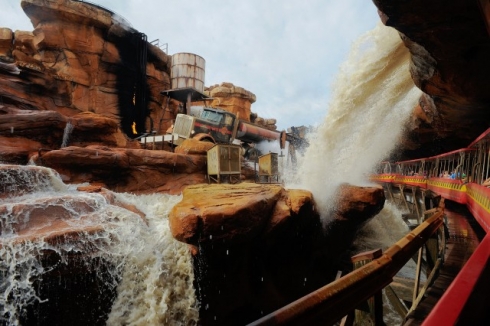
Image © Disney
Universal's original plans for its Florida studios called for a "front lot" walking tour, as well as a tram tour through the studio's backlot. One set-piece, designed by Academy Award-winning art director Henry Bumstead, would see an enormous King Kong figure attack the tram as it passed over a New York bridge. Another, the "Hollywood Canyon", would see a tram rolling onto a bridge in view of the Hollywood Hills. A massive earthquake would then strike, causing a dam to crack and a wall of water to pour down towards the tram, which would escape into an oil field in time for riders to witness a semi-trailer truck explode after crashing into an oil tank.
The initial plans for Disney-MGM Studios, announced in 1985, bore a striking resemblance to those for Universal’s tour. The main attraction would be a tram tour past four working soundstages, an animation building, backlot sets and post-production facilities. One of the set pieces to be included in the tour would be “Catastrophe Canyon”, during which an earthquake would shake the tram, cause fires to ignite, lead to an oil tank explosion and trigger a flash flood. The similarities to Universal’s proposed Hollywood Canyon were undeniable.
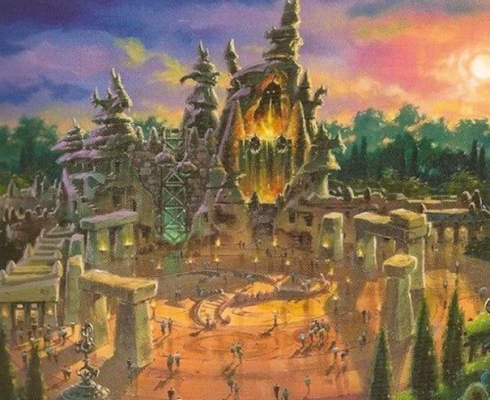
Fast forward to the late 1990s. At the same time that Universal was conceiving Islands of Adventure, Disney's Imagineers had begun work on the design of Disney's Animal Kingdom, Walt Disney World’s fourth park. While most of the park would be dedicated to real-life animals, it would also feature an area, Beastly Kingdom, that would celebrate mythological creatures. This would be split into two sub-areas. One of these would be a medieval village, complete with cold stone pubs and thatch-roofed markets, all lit by flaming torches. At its heart would be the Dragon’s Tower, which would host a major dark ride-cum-roller coaster that would be Animal Kingdom’s main thrill ride. As well as featuring an enormous animatronic dragon, this would be Disney’s first inverted roller coaster – with the trains riding underneath the track, instead of on top of it.
Disney pushed Beastly Kingdom into a "Phase II" at Animal Kingdom when costs spiralled. It has been speculated, but never proven, that several Disney Imagineers were laid off following the disastrous opening of Euro Disney in 1992, subsequently being hired by Universal and taking the plans for Beastly Kingdom with them. Over at Universal’s park, the Lost Continent, with its medieval village, bore an uncanny resemblance to the never-built land conceived by Disney. And, of course, the headline ride was an inverted roller coaster themed around dragons - Dueling Dragons (now Dragon Challenge)
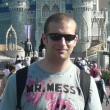
Comments
It'd be nice to see one of your compliments to universal not be backhanded some day.
I still wish they would build Beastly Kingdom at Animal Kingdom. They also were going to build a dino-dig mine train coaster where Triceratops Spin and Primeval Whirl are...that would also still be nice to have. Since they're building Avatar Land there, they probably won't have room to build it now.
Can you imagine Harry Potter on Disney property! I would never, ever leave. Soooo sad that didn't happen.
What's wrong with you? This article was all about how Universal and Disney competing has been great for theme park goers. If Harry Potter hadn't gone to IOA then Disney would never have re-built Fantasyland. It has been rumored that Rowling didn't want face characters that were imitating the main characters of her book and that was Disney's main sticking point. They wanted a meet and greet with Harry Potter and Rowling said no.
Disney announced Avatar soon after Universal announced they were expanding Harry potter to the old park and when Diagon alley was about to open and Universal was getting all the hot press, Disney transformed Hollywood Studios into Frozen Summer.
Competition is great!